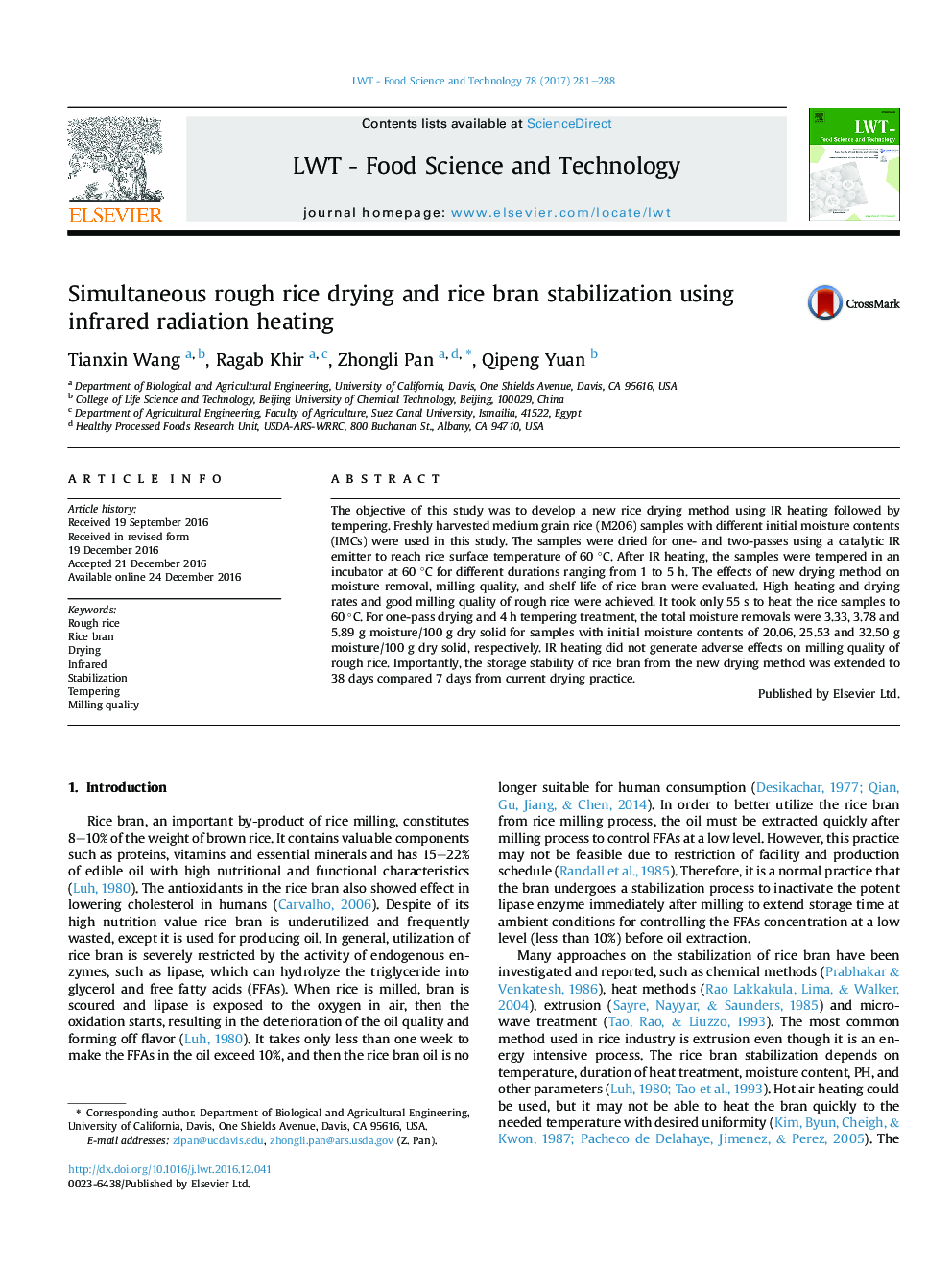| Article ID | Journal | Published Year | Pages | File Type |
|---|---|---|---|---|
| 5769048 | LWT - Food Science and Technology | 2017 | 8 Pages |
â¢A new rice drying method using IR heating followed by tempering was studied.â¢High heating and drying rates of rough rice were achieved.â¢IR heating did not generate adverse effects on total rice yield and head rice yield.â¢The new drying method significantly improved the storage stability of rice bran.â¢The new drying method should bring significant economic benefit to the rice industry.
The objective of this study was to develop a new rice drying method using IR heating followed by tempering. Freshly harvested medium grain rice (M206) samples with different initial moisture contents (IMCs) were used in this study. The samples were dried for one- and two-passes using a catalytic IR emitter to reach rice surface temperature of 60 °C. After IR heating, the samples were tempered in an incubator at 60 °C for different durations ranging from 1 to 5 h. The effects of new drying method on moisture removal, milling quality, and shelf life of rice bran were evaluated. High heating and drying rates and good milling quality of rough rice were achieved. It took only 55 s to heat the rice samples to 60 °C. For one-pass drying and 4 h tempering treatment, the total moisture removals were 3.33, 3.78 and 5.89 g moisture/100 g dry solid for samples with initial moisture contents of 20.06, 25.53 and 32.50 g moisture/100 g dry solid, respectively. IR heating did not generate adverse effects on milling quality of rough rice. Importantly, the storage stability of rice bran from the new drying method was extended to 38 days compared 7 days from current drying practice.
